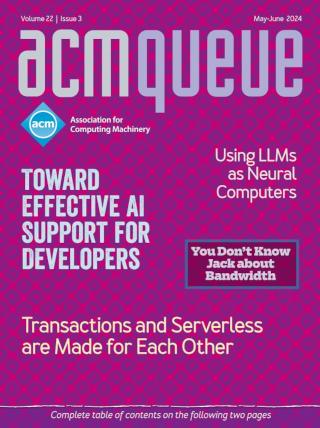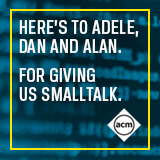
Scale Failure:
Using a tool for the wrong job is OK until the day when it isn’t.
Dear KV, I have been digging into a network-based logging system at work because, from time to time, the system jams up, even when there seems to be no good reason for it to do so. What I found would be funny, if only it weren’t my job to fix it: the central dispatcher for the entire logging system is a simple for loop around a pair of read and write calls; the for loop takes input from one of a set of file descriptors and sends output to one of another set of file descriptors. The system works fine so long as none of the remote readers or writers ever blocks, and normally that’s not a problem. The problem has come about because what was once handling fewer than 10 machines is now handling 40, some of which are remote across a wide area network. The obvious fix is to make the code nonblocking, but what I’m surprised about is that anyone would write code this way. It’s obvious from the first time you look at the code that it cannot scale.
Why LINQ Matters: Cloud Composability Guaranteed:
The benefits of composability are becoming clear in software engineering.
In this article we use LINQ (Language-integrated Query) as the guiding example of composability. LINQ is a specification of higher-order operators designed specifically to be composable. This specification is broadly applicable over anything that fits a loose definition of "collection," from objects in memory to asynchronous data streams to resources distributed in the cloud. With such a design, developers build up complexity by chaining together transforms and filters in various orders and by nesting the chains--that is, by building expression trees of operators.
Interactive Dynamics for Visual Analysis:
A taxonomy of tools that support the fluent and flexible use of visualizations
The increasing scale and availability of digital data provides an extraordinary resource for informing public policy, scientific discovery, business strategy, and even our personal lives. To get the most out of such data, however, users must be able to make sense of it: to pursue questions, uncover patterns of interest, and identify (and potentially correct) errors. In concert with data-management systems and statistical algorithms, analysis requires contextualized human judgments regarding the domain-specific significance of the clusters, trends, and outliers discovered in data.





